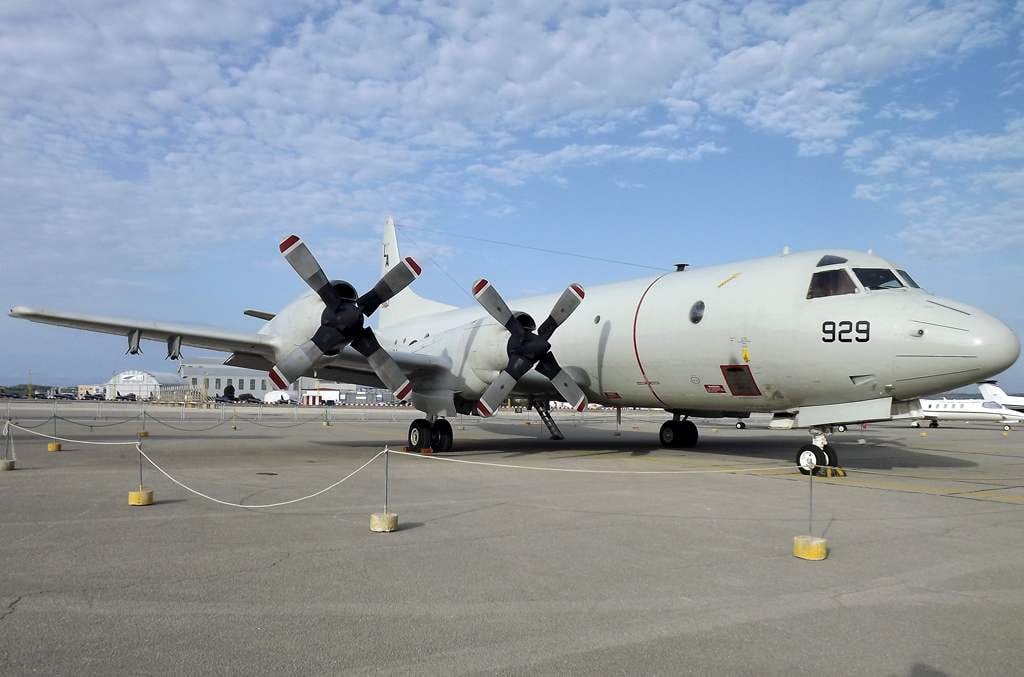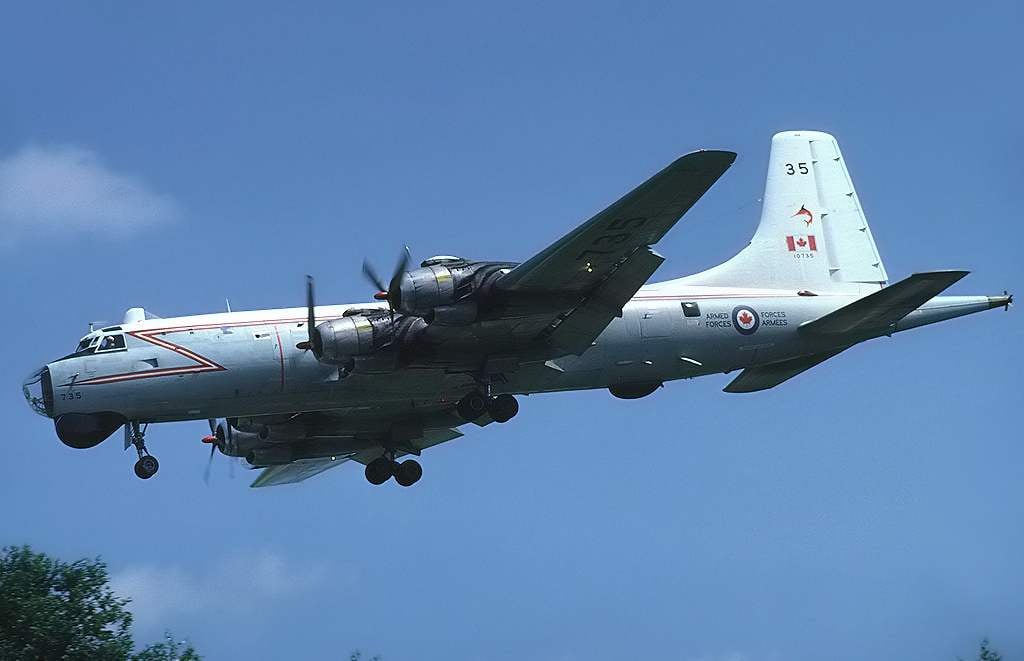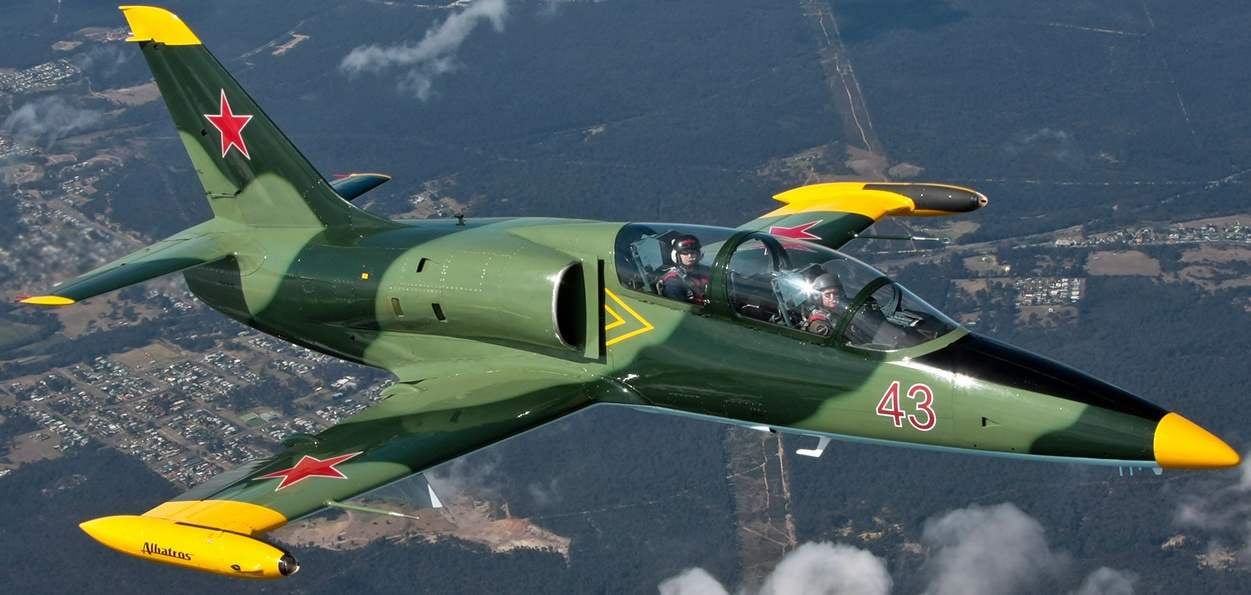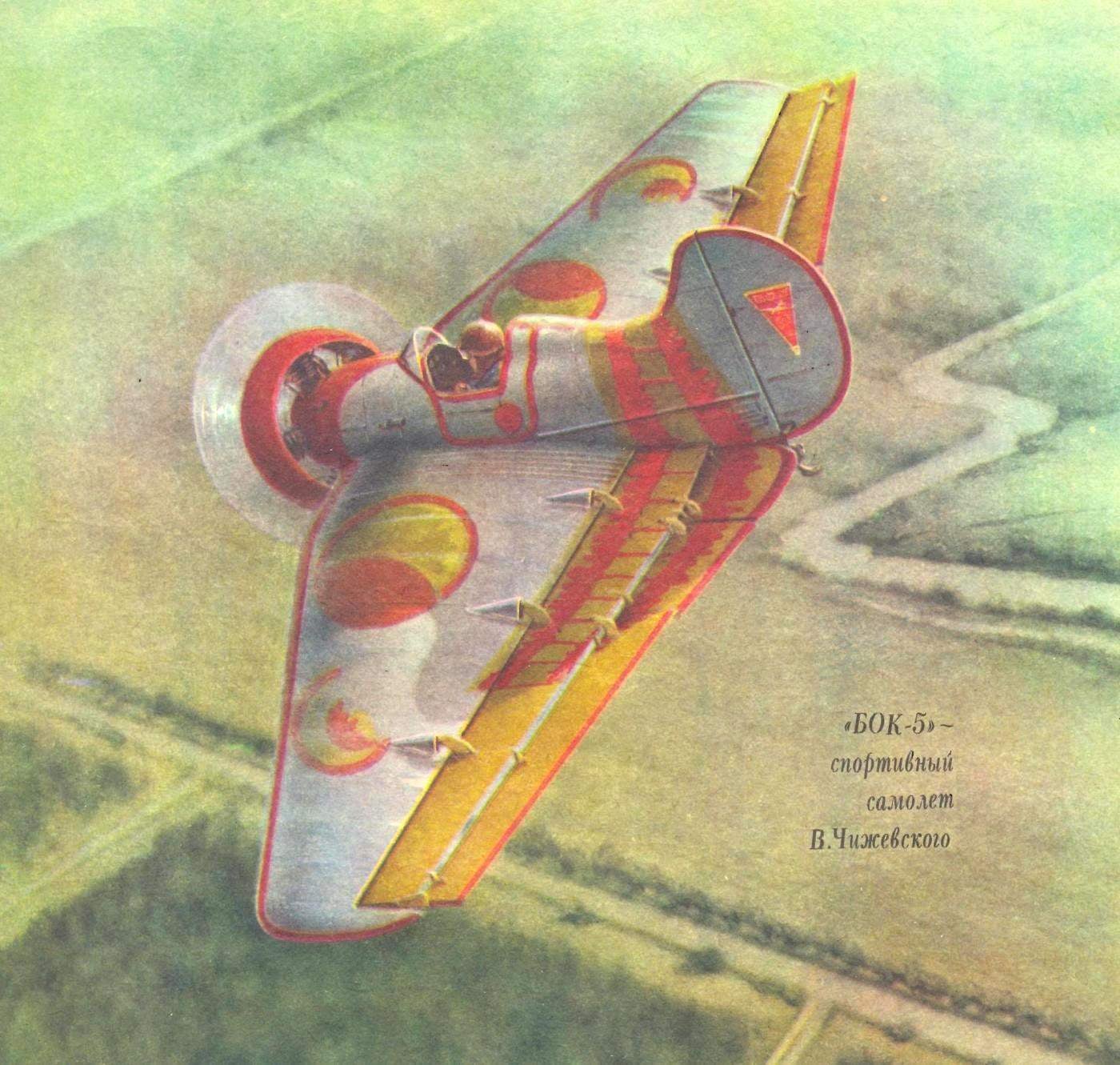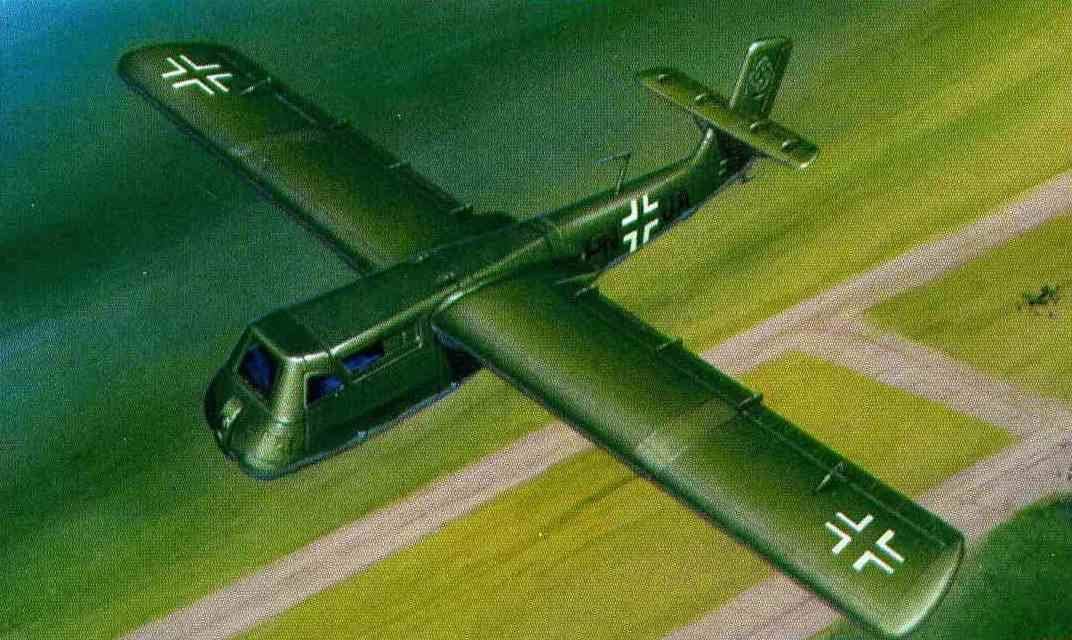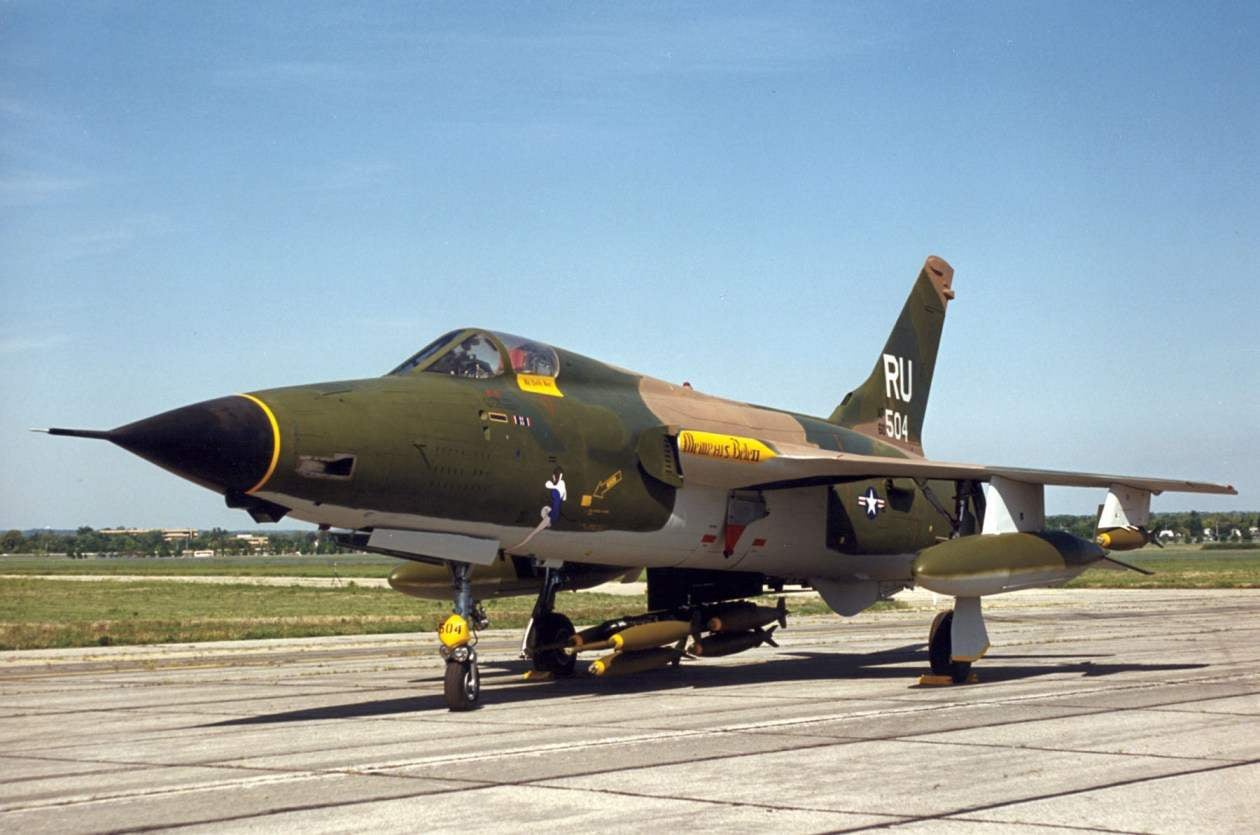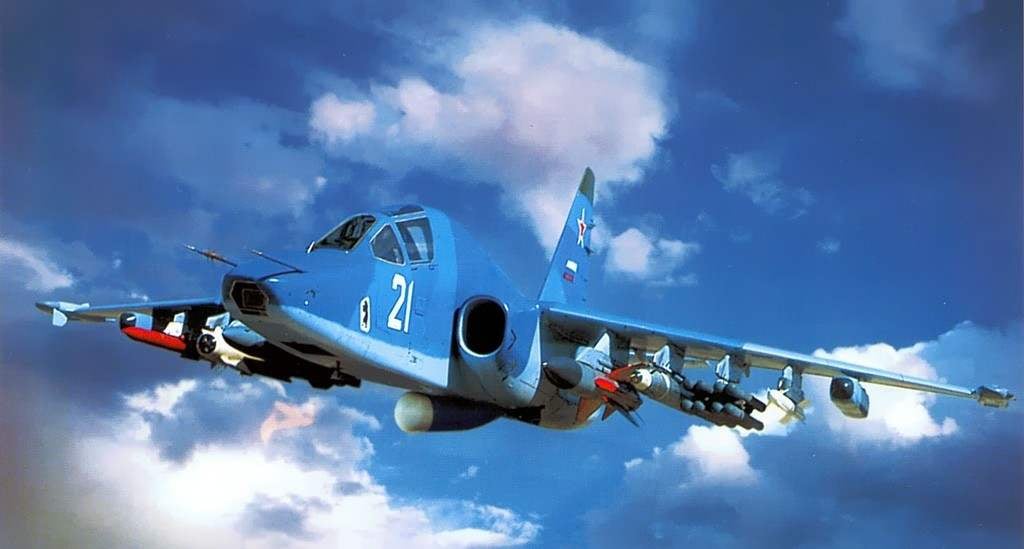 As the basis for “Orion” used passenger aircraft L-188 “Electra”, (1957). Military R-3 differed shortened fuselage, the top of which housed the equipment and operators, and in the lower compartment for weapons and sonobuoys. Appeared Under the wing pylons for the suspension arms and in the rear – magnetometer. The aircraft can carry guided and unguided rockets, conventional and deep (including nuclear) bombs, homing torpedoes, and aerial mines.
As the basis for “Orion” used passenger aircraft L-188 “Electra”, (1957). Military R-3 differed shortened fuselage, the top of which housed the equipment and operators, and in the lower compartment for weapons and sonobuoys. Appeared Under the wing pylons for the suspension arms and in the rear – magnetometer. The aircraft can carry guided and unguided rockets, conventional and deep (including nuclear) bombs, homing torpedoes, and aerial mines.
Aviation
CANADAIR CP-107 “ARGUS”
 The basis for the anti-submarine aircraft “Argus” has become a passenger airliner Bristol 175 Britannia (1952). The design of the machine under the designation CL-28 or “Britain” MR began in April 1954 Fusepad completely reworked. There were two cargo compartments in the bow placed a cabin of the Navigator and radar in a bulky fairing, the tail – rod of the magnetometer. Fuel capacity increased. But the main difference was that the theater was replaced by piston engines. This forced to make changes to the wing design.
The basis for the anti-submarine aircraft “Argus” has become a passenger airliner Bristol 175 Britannia (1952). The design of the machine under the designation CL-28 or “Britain” MR began in April 1954 Fusepad completely reworked. There were two cargo compartments in the bow placed a cabin of the Navigator and radar in a bulky fairing, the tail – rod of the magnetometer. Fuel capacity increased. But the main difference was that the theater was replaced by piston engines. This forced to make changes to the wing design.SMALL, BUT PERFECTLY FORMED
 Multi-purpose fighter F-5E. After the Second world war, the US claimed, not without reason, on the role of world leader, particularly in aviation. The leadership was obliged to provide economic and military assistance to allies.
Multi-purpose fighter F-5E. After the Second world war, the US claimed, not without reason, on the role of world leader, particularly in aviation. The leadership was obliged to provide economic and military assistance to allies.
JET “ALBATROSS”
 Czechoslovakia justly called the center of Europe: at its plants at different times was created by the machines and equipment are well known throughout the world and is characterized by high reliability and original design solutions.
Czechoslovakia justly called the center of Europe: at its plants at different times was created by the machines and equipment are well known throughout the world and is characterized by high reliability and original design solutions.AIR TAXI
 The aircraft L-200 “MORAVA”. In the mid-1930s in the Czech Kunovice in Uhersky Gradiste for the company “Avia” started construction of a new factory and airfield Construction of the enterprise was not completed because of the occupation of Czechoslovakia by fascist Germany in March 1939.
The aircraft L-200 “MORAVA”. In the mid-1930s in the Czech Kunovice in Uhersky Gradiste for the company “Avia” started construction of a new factory and airfield Construction of the enterprise was not completed because of the occupation of Czechoslovakia by fascist Germany in March 1939.
AEROBATICS “FLYING WING”
 By the mid 30-ies of the aircraft type “flying wing” was quite true to their name — they were flying. In our country, in Germany, England, Switzerland, designers and innovators to pilots and enthusiasts, have managed to raise these strange machines in the air and make them confident flights. However, while none of them fly better than the plane normal scheme. Therefore they were treated as experimental and put up with some handling shortcomings.
By the mid 30-ies of the aircraft type “flying wing” was quite true to their name — they were flying. In our country, in Germany, England, Switzerland, designers and innovators to pilots and enthusiasts, have managed to raise these strange machines in the air and make them confident flights. However, while none of them fly better than the plane normal scheme. Therefore they were treated as experimental and put up with some handling shortcomings.AIR EXOTIC
 Glider interceptor firm “Blom und Voss” BV 40. January 1943 started mass raids of British bombers compounds on German cities. Armada of bombers flying in close formation, known as the “combat box”, providing mutual support by their fire side 12.7 mm machine guns. German fighters struggled to overcome the barriers of the escort fighters and defensive fire of the bombers before they reach the ability to attack the target. Losses were high and the efficiency low. In this regard, the task of countering allied bombers became for Germany a priority. Her decision was attended by many design teams that have submitted their, sometimes very original projects. Perhaps the most unexpected proposal was submitted by the firm “Blom und Voss” glider interceptor V 40. Let us try to retrace the thinking of its creators.
Glider interceptor firm “Blom und Voss” BV 40. January 1943 started mass raids of British bombers compounds on German cities. Armada of bombers flying in close formation, known as the “combat box”, providing mutual support by their fire side 12.7 mm machine guns. German fighters struggled to overcome the barriers of the escort fighters and defensive fire of the bombers before they reach the ability to attack the target. Losses were high and the efficiency low. In this regard, the task of countering allied bombers became for Germany a priority. Her decision was attended by many design teams that have submitted their, sometimes very original projects. Perhaps the most unexpected proposal was submitted by the firm “Blom und Voss” glider interceptor V 40. Let us try to retrace the thinking of its creators.
THE LAST FIGHTER ALEXANDER KARTVELI
 Supersonic tactical fighter-bomber of the US air force Republic F-105 Thunderchief. Supersonic tactical fighter-bomber custom development F-105 Thunderchief (eng. the Thunderer) company Republic became the first aircraft of this type—all combat vehicle of similar purpose were merely modifications of the classic fighters. In addition, the Thunderchief was a single of the largest single-engine fighter-bombers in the world ever built such aircraft. Its development took more than seven years, which took five million man-hours and a billion dollars.
Supersonic tactical fighter-bomber of the US air force Republic F-105 Thunderchief. Supersonic tactical fighter-bomber custom development F-105 Thunderchief (eng. the Thunderer) company Republic became the first aircraft of this type—all combat vehicle of similar purpose were merely modifications of the classic fighters. In addition, the Thunderchief was a single of the largest single-engine fighter-bombers in the world ever built such aircraft. Its development took more than seven years, which took five million man-hours and a billion dollars.
WINGED UNIVERSAL SU-25TM
 The interaction between aviation and ground forces—one of the conditions for the successful conduct of modern warfare. The form of this interaction is determined by the accepted military doctrine. Local wars of the 1960s years has dealt a serious blow to the supporters of nuclear missile strategy, is now considered front-line aircraft as means of delivery of nuclear weapons. Vietnam and the Arab-Israeli war revealed the need to enhance survivability and effectiveness of tactical aircraft with conventional means of destruction under intense fire counter enemy air defenses. Partly these problems were solved by modifications and rearmament of the existing fleet of tactical guided missiles “air—surface”.
The interaction between aviation and ground forces—one of the conditions for the successful conduct of modern warfare. The form of this interaction is determined by the accepted military doctrine. Local wars of the 1960s years has dealt a serious blow to the supporters of nuclear missile strategy, is now considered front-line aircraft as means of delivery of nuclear weapons. Vietnam and the Arab-Israeli war revealed the need to enhance survivability and effectiveness of tactical aircraft with conventional means of destruction under intense fire counter enemy air defenses. Partly these problems were solved by modifications and rearmament of the existing fleet of tactical guided missiles “air—surface”.“MUSTACHE TRIANGLE”
 French fighter-interceptor. In 1967, the firm Dassault, in cooperation with Swiss engineers aircraft factory in Emmen, started work on the modernization of Mirage, known as “Milan” or “kite”. The main feature of the Milan was canards (PGO), which received the unofficial title of “whiskers”, intended to reduce takeoff and landing distances and increased maneuverability in dogfighting. The principle of operation of the PGO was to create pitching moment at low speeds without losing lift and increasing drag.
French fighter-interceptor. In 1967, the firm Dassault, in cooperation with Swiss engineers aircraft factory in Emmen, started work on the modernization of Mirage, known as “Milan” or “kite”. The main feature of the Milan was canards (PGO), which received the unofficial title of “whiskers”, intended to reduce takeoff and landing distances and increased maneuverability in dogfighting. The principle of operation of the PGO was to create pitching moment at low speeds without losing lift and increasing drag.
